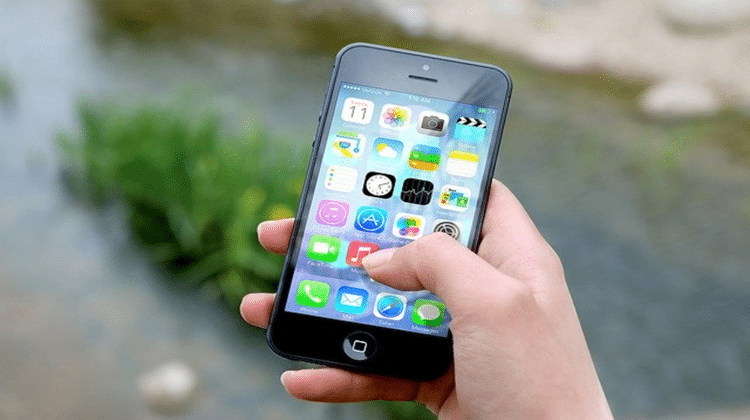Mobile phones have morphed from simple devices that could help us stay in touch via voice phone calls to be mini portable computers capable of video calls, and running multiple apps. Some phones are now so powerful they can even be used with a monitor as an operating system like the Samsung Note with DeX OS.
Mobile tech has come a long way in a short space of time. If you are experiencing specific issues with various gadgets when running your business, EC-MSP’s expert IT support in London might be useful for you. Let’s take a brief look at the evolution of the mobile and what we can expect from the future of mobile technology.
Mobile phones have been in development since the late 60s. The early versions through the 70s were too heavy and bulky to be true mobile phones. They were typically car phones that needed a running engine in order to work.
The Motorola DynaTAC 8000x was the first portable phone, although it was large, heavy and very expensive costing thousands of pounds.
By the 90s more portable devices started to come to the market. The first flip phone design was created helping to reduce the length of the phone.
The cutting edge phones of the time boasted features including the capability of storing 30 numbers.
While Motorola was the first brand to emerge as a leader in early mobile phone technology, Nokia started creating popular phones in the early 90s.
This period of time was the start of the GSM network which allowed the use of SMS text messages with a 160 character limit.

Nokia continued to lead the industry over the next few years with the production of iconic models including the 5110, 3210, and the 3310.
Clip on cases to change the phones appearance, choice of ringtones, and games like Snake moved the phone beyond just a device for making phone calls and into more of a fashion accessory.
Nokia’s dominance began to recede in the early 2000s, with Sony Ericsson, LG, and Samsung increasingly becoming major players in the market.
Flip phones become more common, while colour screens began to appear at this time too, as well as built in cameras, although with very low resolution compared to today’s phone cameras.
Internet access also started to become available via WAP connections, though these could only load basic information. MP3 player functionality also became popular in many new phone models.
The Smart-phone
Around 2006 phones started to become truly smart. As GPS-enabled devices they could now check your emails, play music, surf the internet, download content and take photos.
By 2007 phones started to be capable of functions close to those of today with the release of the first iPhone. Blackberry with their full keyboard design useful for emails and instant messaging also enjoyed popularity.
Mobile Phones Today
Today phones are capable of seriously impressive speed and functionality and have moved on light years away from the early technology.
With millions of apps in the Google Play and Apple App stores users can have highly individualized devices that suit their own lives, work, hobbies and enhance their life experience, while HD quality cameras allow users to capture and store memories.
Phones are also able to act as contactless payment devices storing bank card details so an individual can be cashless and cardless. More web pages are now visited on mobile devices than via desktops.

Screen sizes have increased, as have security features such as biometric unlocking from fingerprints of facial recognition technology.
As far as the future goes there are shaped and curved screens, higher-quality cameras, improved battery life and ever more powerful processors.
The launch of the 5G network started rolling out in the UK in 2019. By the end of the year 5G coverage had expanded to 31 cities and towns and coverage continues to increase in early 2020. The benefits of 5G include faster speed. Data transfer speeds are expected to be about 10 times higher with 5G than is possible with 4G. Downloading a HD movie takes 10 minutes with 4G, but can be less than a second with 5G.
Future innovations have been predicted. Flexible, bendable and foldable phones are expected. Phone capable of projected holographics are another idea. With the increasing use of the IoT and smart technology it is also believed that smartphones could be remote controls to manage much of the world around us.
Of course the environment is a huge issue across all business sectors at the moment so expect innovations in green technology in the production of phones and their use.
Phone use will continue to increase in the workplace
Today’s working environment is more mobile, flexible, and diverse than those of the past. Remote working and dispersed teams are the norm, so mobiles help workers to stay in touch with colleagues and clients.
Phones seamlessly integrate with calendars, business and personal contacts, and apps suited to each business. Researchers have found that smartphones can add an extra 2 hours of work to each day, as work can be done outside of the office, while commuting and from almost anywhere.
Mobile phones are now powerful computers that fit in our pockets, which most of us find it hard to live without. It will be amazing to see what they are capable of in another 40 years. On the other hand, modern businesses might need to hire an IT consultancy to deal with the ever-evolving mobile tech in the easiest way.
About EC-MSP, your Cyber Essentials partner
EC-MSP are one of the most trusted IT support providers in London. If you would like more help and support with technology for your business, contact us today to see how we can help.




